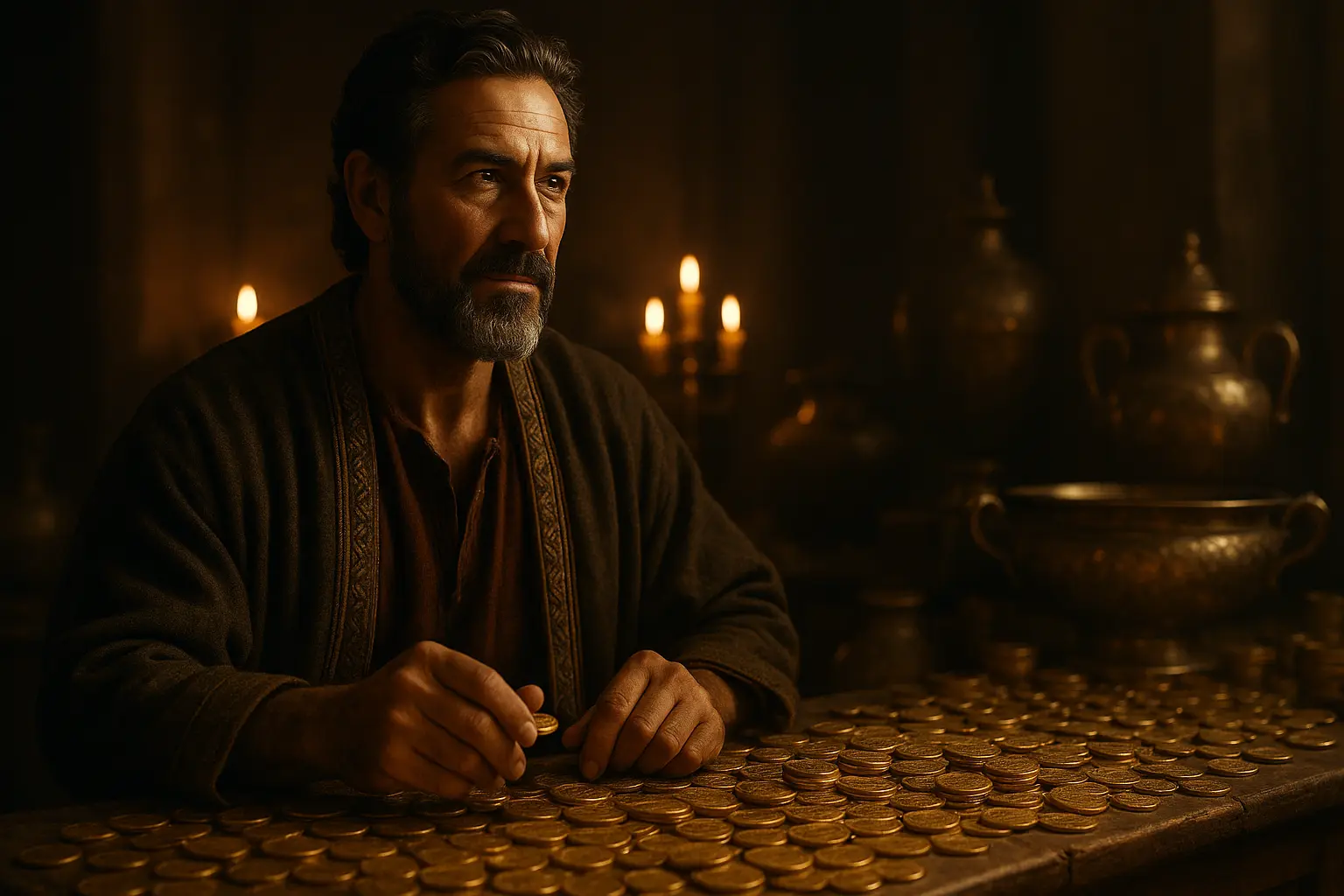Ruth 2
06-11-2025 - Posted by Geert-JanOriginally posted on October 29, 2006 – by Andre Piet
summary of a Bible study held on 29 October 2006 in Zoetermeer
The figure of Boaz (a type of Christ) appears on the scene after the mention of the beginning of the barley harvest. That is not without meaning. Boaz means: in Him is strength. Never was God’s strength more clearly demonstrated than on the most memorable beginning of the barley harvest ever: the day of Christ’s resurrection.
why must the Redeemer be a blood relative?
Boaz is introduced as a blood relative (on Elimelech’s side) – Ruth 2:1. This is of great importance to the progression of the story, because only a kinsman could act as redeemer. The typological meaning should be clear: redemption can only be accomplished because Christ partook of blood and flesh:
“Since, then, the children have participated in blood and flesh, He also, similarly, partakes of the same,
that through death He should be discarding the one having the mightoverof death, that is, the Adversary…”
—Heb. 2:14(Note: the Adversary does not have power over death, but the might of death – cf. KJV: “power of death”. The Adversary, as the “man-killer from the beginning,” brings death. But Christ has power over death: therefore, He can vivify!)
only one who dies can rise
Christ had to take on blood and flesh (= become mortal), because only that way could He rise from among the dead and thereby bring about redemption.
a man of great wealth
Boaz is described as “a man of great wealth” – Ruth 2:1. That is to say: in order to act as a redeemer, he is able to pay a great price. Of Boaz’s descendant, Christ Jesus, we read:
“…Who is giving Himself a correspondent Ransom for all…” -1 Tim. 2:6. That is the message of the Evangel: the price has been paid for all – everyone, without exception, is the property of Christ!
Boaz: the left pillar
Boaz is not only the main character in the book of Ruth, but also the name of one of the famed pillars at the entrance of Solomon’s temple. The left pillar (that is, to the left of the entrance) was called Boaz, and the right pillar Jachin (= “YHWH establishes”) – 2 Chron. 3:17. Left and right here also correspond to south and north respectively – cf. 2 Chron. 4:10. In biblical symbolism, left and south represent humbling and subordination, whereas right and north represent priority and exaltation. The left pillar thus points to Christ’s first coming in humiliation, and the right pillar to His second coming in exaltation (when the Kingdom will be established on earth).
Between the left and right pillar, the priest would go in and out of the sanctuary. In parallel, Christ – after His first coming (Boaz) – entered the heavenly sanctuary, and will soon return to establish His Kingdom on earth (Jachin). The pillars were cast at the location where Israel crossed the Jordan (= death and resurrection; see 1 Kings 7:46 cf. Joshua 3:16).
gleaning = reading the Word
The gleaning of ears of grain is a picture of reading God’s Word. Ears of grain stand for bread, which is a well-known type of the Word of God. In Dutch, the word ‘lezen’ (“to read”) literally means to gather. See Matthew 4:4.
coincidence exists…
In Ruth 2:3 we read that Ruth “happened” to come to the field of Boaz. That means: by chance. So coincidence does exist. The point, however, is that it is God who causes things “to fall into place.”
“The lot is cast into the lap, Yet from YHWH is every decision of it.” – Prov. 16:33
Coincidentally… a princess went to bathe just when a mother had laid her child in the Nile, and coincidentally, the baby began to cry at just that moment, and coincidentally…
Coincidence is God’s timing in disguise.
found grace
Ruth found grace in the eyes of Boaz – Ruth 2:10.
It is the same expression used in connection with the people of Israel in the end time:
“Thus says YHWH:
The people escaping from the sword
Found grace in the wilderness – Israel –
When it went to find its rest.”
Jer. 31:2
what is a redeemer?
A redeemer (Hebrew: go’el) is a near blood relative who is called to save his family, to the extent that he is able. For example, to redeem out of slavery. Or to buy back lost family property. Or to act as a blood avenger and thus restore violated justice. YHWH is also frequently called a Redeemer in Scripture – Job 19:25; Prov. 23:11; Isa. 54:8. For in Jesus the Messiah, He has become a near blood relative. He is the one who will return the lost land of Israel to the original heirs.
He is also the one who, as the Avenger of His people, will restore justice in the near future.
And He is the one who paid the ransom for all, so that all humanity, enslaved to death, will be redeemed. 1 Timothy 2:6.

 English Blog
English Blog